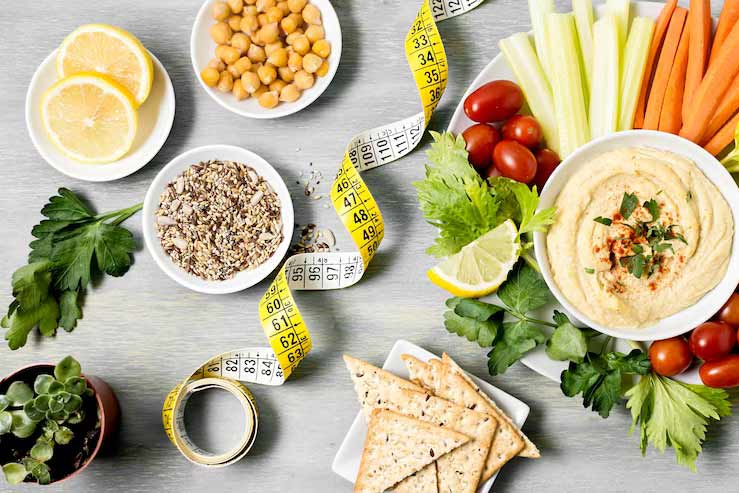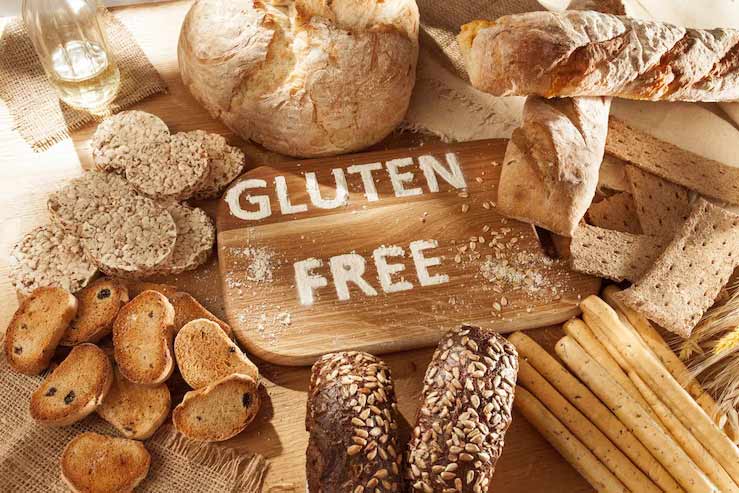Eating style, also known as dietary pattern, refers to the habitual consumption of food and beverages over time. It is a crucial aspect of human life, as it determines the nutritional quality of our diet, and consequently, our overall health and well being.
A healthy eating style is associated with a lower risk of chronic diseases such as obesity, type 2 diabetes, cardiovascular diseases, and certain cancers. In contrast, a poor eating style can lead to malnutrition, weight gain, and an increased risk of chronic diseases. In this article, we will discuss the different eating styles and their impact on health.
Mediterranean Diet one of the eating styles
The Mediterranean diet is a traditional eating style that is based on the dietary habits of people living in countries bordering the Mediterranean Sea. This diet is characterized by high consumption of plant-based foods such as fruits, vegetables, legumes, nuts, and whole grains. It also includes moderate consumption of dairy products, fish, and poultry, and limited intake of red meat and sweets.

The Mediterranean diet has been associated with numerous health benefits, including a lower risk of cardiovascular diseases, type 2 diabetes, and certain cancers. This is due to the high consumption of fiber, vitamins, minerals, and antioxidants found in plant-based foods, as well as the healthy fats found in fish and olive oil.
Vegetarian and Vegan Diets one of the eating styles
Vegetarian and vegan diets are eating styles that exclude meat and animal products. Vegetarian diets may include dairy and eggs, while vegan diets exclude all animal-derived products. These eating styles are typically high in plant-based foods such as fruits, vegetables, legumes, and whole grains.

Vegetarian and vegan diets have been associated with numerous health benefits, including a lower risk of cardiovascular diseases, type 2 diabetes, and certain cancers. These benefits are due to the high consumption of fiber, vitamins, minerals, and antioxidants found in plant-based foods.
However, vegetarian and vegan diets may also be deficient in certain nutrients, such as vitamin B12, which is primarily found in animal products. Therefore, it is important for individuals following these eating styles to ensure they are consuming adequate amounts of these nutrients through supplementation or fortified foods.
Western Diet one of the eating styles
The Western diet is a dietary pattern that is characterized by high consumption of processed and fast foods, red meat, sugar, and saturated fats. It is typically low in fruits, vegetables, and whole grains.

The Western diet has been associated with numerous health problems, including obesity, type 2 diabetes, cardiovascular diseases, and certain cancers. This is due to the high intake of unhealthy fats, sugar, and processed foods, which can lead to weight gain and chronic inflammation.
DASH Diet one of the eating styles
The DASH (Dietary Approaches to Stop Hypertension) diet is an eating style that is designed to reduce high blood pressure. It is characterized by high consumption of fruits, vegetables, whole grains, lean protein, and low-fat dairy products. It also involves limiting intake of salt, sugar, and saturated fats.

The DASH diet has been shown to lower blood pressure, reduce the risk of cardiovascular diseases, and improve insulin sensitivity. This is due to the high consumption of fiber, vitamins, minerals, and antioxidants found in plant-based foods, as well as the low intake of unhealthy fats and salt.
Intermittent Fasting one of the eating styles
Intermittent fasting is an eating pattern that involves alternating periods of fasting and eating. There are different approaches to intermittent fasting, such as the 16/8 method, which involves fasting for 16 hours and eating within an 8 hour window.

Intermittent fasting has been associated with numerous health benefits, including weight loss, improved insulin sensitivity, and reduced inflammation. This is due to the metabolic changes that occur during fasting, such as increased fat burning and the release of growth hormones.
However, it is important to note that intermittent fasting may not be suitable for everyone, especially those with a history of disordered eating or certain medical conditions. It is recommended to consult a healthcare professional before starting an intermittent fasting regimen.
Gluten-free Diet one of the eating styles
A gluten-free diet is an eating style that excludes gluten, a protein found in wheat, barley, and rye. This eating style is primarily followed by individuals with celiac disease, gluten intolerance, or wheat allergy.

Gluten-free diets have been shown to improve symptoms in individuals with celiac disease or gluten intolerance. However, it is important to note that gluten-free products may be highly processed and low in nutrients, which can lead to an unhealthy diet if not properly balanced.
Paleo Diet one of the eating styles
The Paleo diet is an eating style that mimics the dietary habits of our ancestors during the Paleolithic era. It involves consuming foods that were available to our ancestors, such as lean meats, fish, fruits, vegetables, nuts, and seeds. It excludes processed foods, dairy products, and grains.

The Paleo diet has been associated with weight loss, improved blood sugar control, and reduced inflammation. However, critics argue that the diet may be deficient in certain nutrients, such as calcium and vitamin D, due to the exclusion of dairy products.
Conclusion one of the eating styles
In conclusion, the choice of eating style has a significant impact on our health and wellbeing. While there is no one-size-fits-all approach to eating, it is important to choose an eating style that is sustainable and balanced, and meets our individual nutritional needs.
Plant-based diets, such as the Mediterranean, vegetarian, and vegan diets, have been associated with numerous health benefits and are a sustainable option for individuals looking to improve their health. However, it is important to ensure adequate intake of certain nutrients, such as vitamin B12 and iron, through supplementation or fortified foods.
The Western diet, on the other hand, has been linked to numerous health problems and should be limited or avoided. The DASH diet, intermittent fasting, gluten-free diet, and Paleo diet are other eating styles that have shown health benefits, but may not be suitable for everyone.

It is important to consult a healthcare professional before starting a new eating style, especially if you have a history of medical conditions or disordered eating. A registered dietitian can also provide guidance on how to create a balanced and sustainable eating plan that meets your individual nutritional needs.
Don’t you want to change your eating style?
Changing your eating style and choosing the healthiest foods is an excellent way to improve your overall health and wellbeing.
Here are some tips to help you make the transition:
- Eat a variety of whole foods: Eating a variety of whole foods such as fruits, vegetables, whole grains, nuts, and seeds can provide your body with essential nutrients and fiber.
- Cut back on processed foods: Processed foods are often high in sugar, salt, and unhealthy fats, and can contribute to weight gain and chronic diseases. Try to limit your consumption of processed foods and opt for whole foods instead.
- Choose lean protein sources: Lean protein sources such as chicken, fish, beans, and lentils can provide your body with essential amino acids without the added fat and cholesterol found in red meat.
- Eat healthy fats: Healthy fats such as those found in nuts, seeds, avocados, and fatty fish can help to improve heart health and reduce inflammation.
- Limit sugar and salt: Consuming too much sugar and salt can lead to a variety of health problems. Try to limit your intake of sugary drinks and snacks, and choose low-sodium options when possible.
- Drink plenty of water: Drinking plenty of water can help to keep your body hydrated and flush out toxins. Aim for at least 8 glasses of water per day.
- Cook at home: Cooking at home allows you to control the ingredients and portion sizes of your meals. Experiment with healthy recipes and cooking techniques to create delicious and nutritious meals.
Making changes to your eating style can take time, but with patience and persistence, you can develop healthy habits that will benefit your body and mind. Remember to listen to your body, make small changes gradually, and enjoy the process of exploring new flavors and cuisines.
The last word is with you, the audience
Be sure to read other educational articles. For scientific issues, be sure to contact a specialist doctor. These materials are only for study and non-educational purposes. Of course, expert doctors can guide you a lot.

Our cooking training center has collected unique materials for you dear ones. This content is very useful and will help you cook the best and most delicious food for yourself and your loved ones at home.
The slogan we put on our site is to fight obesity. In this regard, we will provide you with many suitable recipes. Be sure to follow our site to learn about many healthy foods. Do not forget that a healthy life requires extensive changes. One of these changes is changing food. So eat healthy.
Please follow us on linkedin. You can learn all best french food recipe and best Italian food recipe and best arabic food recipes and best canadian food recipes you can check our Reddit page.
